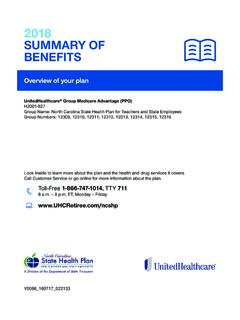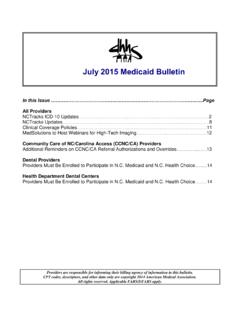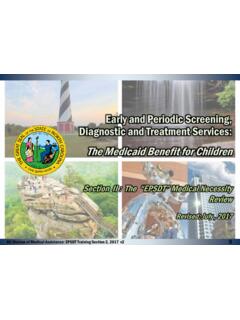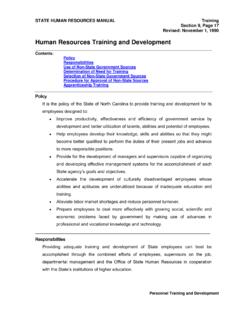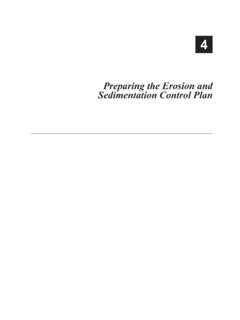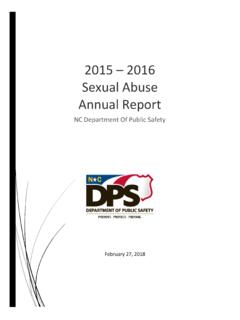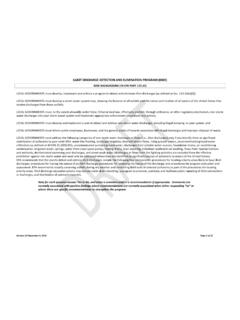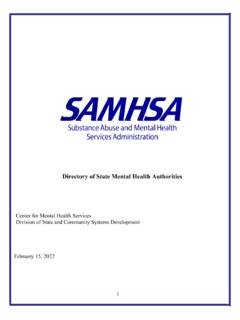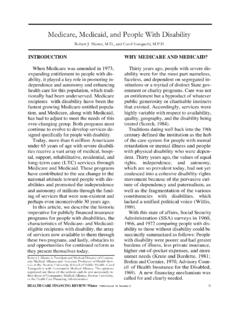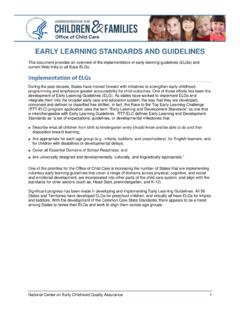Transcription of Communication Campaigns
1 Communication Campaigns Information Guide Series Division of Mental Health, developmental Disabilities, and Substance Abuse Services 1/1/2014 Communication Campaigns Information Guide Series 1 Communication Campaign Information Guide The Communication Campaign Information Guide was developed as a means to provide resources for prevention practitioners in addition to training opportunities. The Centers for Prevention Resources offers classroom-based and online training throughout the year. This Guide identifies toolkits, books, videos, websites and other resources for providers needing immediate professional development resources and information on Communication Campaigns . Thank you for your dedication to ensuring effective Communication Campaigns that are grounded in prevention best practice.
2 We believe your hard work in this area will improve the lives of children, youth and communities across the state. Your work is meaningful, important and necessary in the promotion of healthy, drug-free communities. The center for Prevention Resources will offer a Developing and Implementing Successful Communication Campaigns training which provides more information about how to plan for and implement this strategy. Comments and Suggestions This information guide is a draft version. Prevention practitioners are encouraged to provide comments and suggestions on the information and guidance provided in this document to: Sarah Potter Community Wellness, Prevention, and Health Integration Team Leader Department of Health and Human Services Division of MH/DD/SAS Communication Campaigns Information Guide Series 2 Communication Campaigns Overview This section will provide you with general information about Communication Campaigns and references to appropriate tools, guides, books and websites that will serve as a starting point for planning and implementing this approach.
3 WHAT IS THIS APPROACH? Communication Campaigns are environmental prevention strategies that attempt to offset the impact of advertising that promotes tobacco and alcohol use by utilizing the same media channels and advertising techniques to provide target populations with anti-tobacco and anti-alcohol messages that level the playing field. For example, research has shown that it takes only one tobacco counter-advertisement to counteract the impact of three tobacco advertisements on youth attitudes toward tobacco use. Social norms marketing Campaigns are a special subset of Communication Campaigns that utilize various media channels to broadcast true norms regarding the use of alcohol, tobacco, and other drugs (ATOD) in a target population. This approach is based upon the premise that the majority of adolescents overestimate the amount and frequency of ATOD use among their peers.
4 Social norms marketing therefore attempts to correct these misperceptions by broadcasting the true norms and creating positive peer pressure to align their beliefs and behaviors more closely with the true norms. WHAT DOES THIS APPROACH DO? Communication Campaigns utilize a purposeful promotional strategy to change knowledge, attitudes, behavior or policy in a specific, intended audience via marketing and advertising techniques. Recognizing the power of marketing and advertising in influencing consumer decisions, non-profits and the public sector have embarked on using the same powerful concepts to impact issues related to public health, including prevention of teen substance use/abuse. Communication Campaigns can help to counteract the negative impact of alcohol and tobacco advertising by promoting healthy behaviors and working to change community norms.
5 For example, Communication Campaigns can be used to: Raise awareness Influence attitudes and norms Increase knowledge Reinforce knowledge, attitudes and/or behavior Show benefit of behavior change Demonstrate skills Suggest/prompt an action Refute myths and misconceptions Communication Campaigns Information Guide Series 3 Communication Campaigns have successfully been used to change youths attitudes, beliefs, and behavior regarding tobacco, alcohol, and marijuana use: Increase in adult conversations with their children about tobacco, and decreased parental use of tobacco. Increase in anti-tobacco attitudes among youth and decrease in youth tobacco use. Decrease in past-30 day tobacco use among youth.
6 Increase in more accurate perceptions of peer tobacco use. Reductions in youth marijuana use. Evaluations of social norms marketing among college populations have demonstrated changes in perceived peer alcohol use as well as decreases in actual alcohol use: Decrease in perceptions of alcohol use, binge drinking, and past-30 day alcohol use. Reduction in normative perceptions of alcohol use. Increase in percentage of students who correctly identified campus drinking norms. Decrease in drinking frequency. Decrease in both perceived peer binge drinking and actual self-reported binge drinking. HOW DO YOU IMPLEMENT THIS APPROACH? Utilizing a step-by-step process model will help to insure that all key steps are taken and that the program keeps on track.
7 It steers practitioners through a process of planning, implementation and evaluation phases, steps and tasks that are often necessary for program success. The Developing and Implementing Successful Communication Campaigns training, offered through the Centers for Prevention Resources details the following four phase model: Phase 3. Implementation Phase Conduct a resource assessment Gather information Pinpoint the issue Develop a timeline Launch campaign Initiate marketing plan Reinforce media campaign with interactive strategies 2. Strategy Development Phase 4. Evaluation Phase Explore message distribution Develop a marketing plan Identify your brand Develop message(s) Design materials Pilot test concepts and materials Conduct process evaluation Conduct outcome/impact evaluation Make refinements, continue to the planning phase Communication Campaigns Information Guide Series 4 WHAT ARE THE IMPLEMENTATION STANDARDS FOR THIS APPROACH?
8 The following standards must be applied when implementing a Communication or social norms approach: Participate in a Division sponsored or approved Communication Campaign training. Implement the campaign for a minimum of nine consecutive months. Secure support and/or participation from those community sectors that are responsible for providing access to the target audience. Collect baseline survey data from a representative sample of the target audience. Collect survey data at least once every two years to aid in the refinement of campaign messages and measure progress toward the achievement of the campaign objective(s). Develop a minimum of one objective using the baseline data collected from the target audience. Each objective should specify direction of change (increase or decrease), specify focus of change, identify the specific target audience, and be measurable from the data sources.
9 Develop and release campaign materials, consistent with your project objective(s), to be released at least once every 6 weeks. Ensure that campaign materials do not include moral or fear appeals and do not focus on the long-term risks and harm associated with ATOD use. Disseminate campaign materials using a minimum of two message distribution sources. Distribute messages through sources that are popular and credible with the target population. Distribute messages using supplemental methods such as contests, presentations, sponsored events and/or promotional items, at least once every 3 months. Gather feedback on campaign messages and materials from a representative sample of the target audience. WHAT REFERENCE MATERIALS ARE AVAILABLE? BOOKS The Basics of Social Marketing: How to Use Marketing to Change Behavior Turning Point Social Marketing National Excellence Collaborative.
10 This is a stand-alone tool to help practitioners apply effective social marketing to public health programs and practices. The publication can be downloaded from: Early and Often: How Social Marketing of Prevention Can Help Your Community Jaker, J. This resource guide is rich with information and specific examples of effective social marketing messages for substance abuse prevention. A Field Guide to Designing a Health Communication Strategy O Sullivan, , Yonkler, , Morgan, W., and Merritt, Baltimore, MD: Johns Hopkins Bloomberg School of Public Health/ center for Communication Programs, March 2003. Communication Campaigns Information Guide Series 5 The purpose of this guide is to provide practical guidance to those who are in a position to design, implement, or support a strategic health Communication effort.
